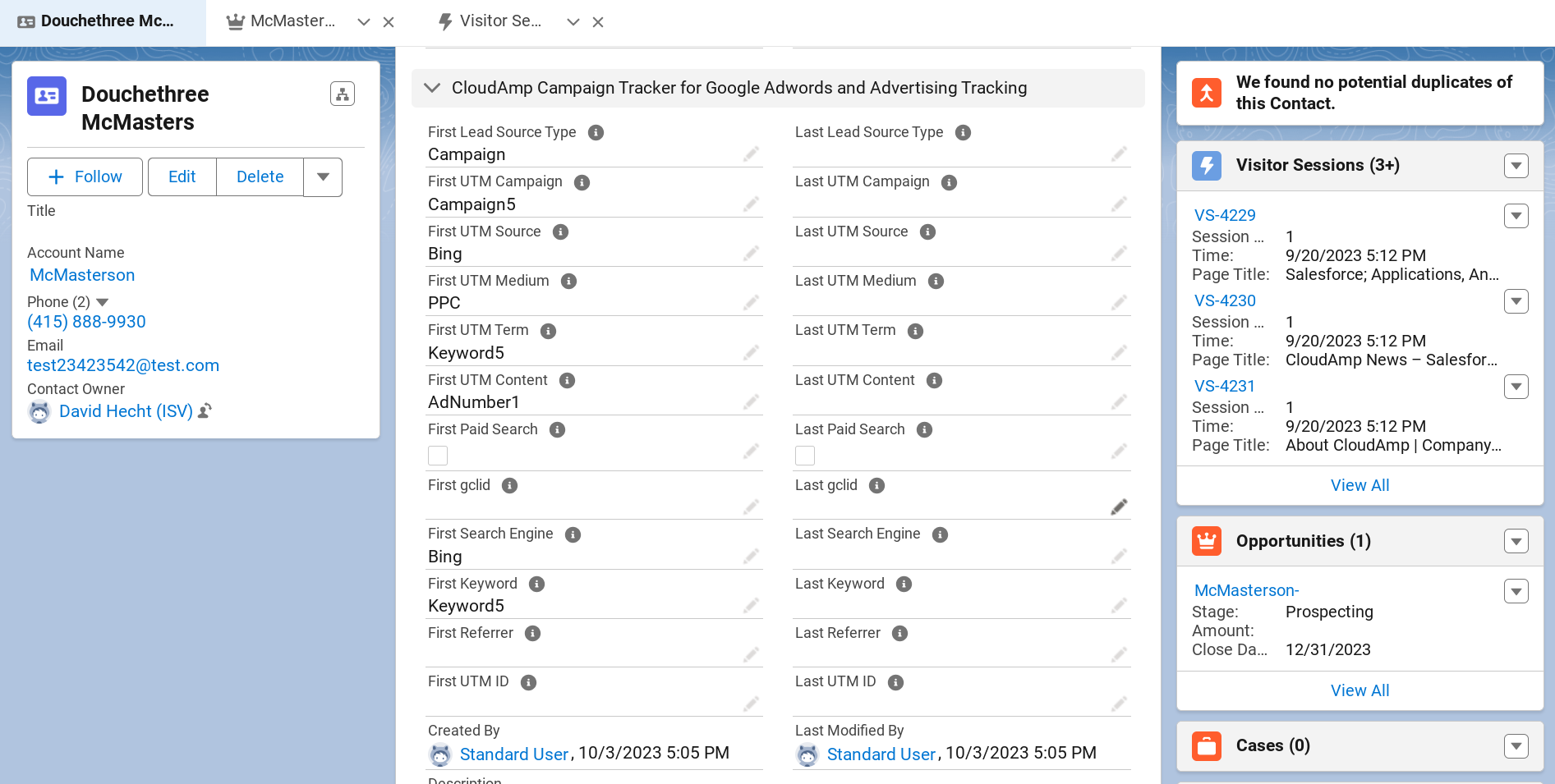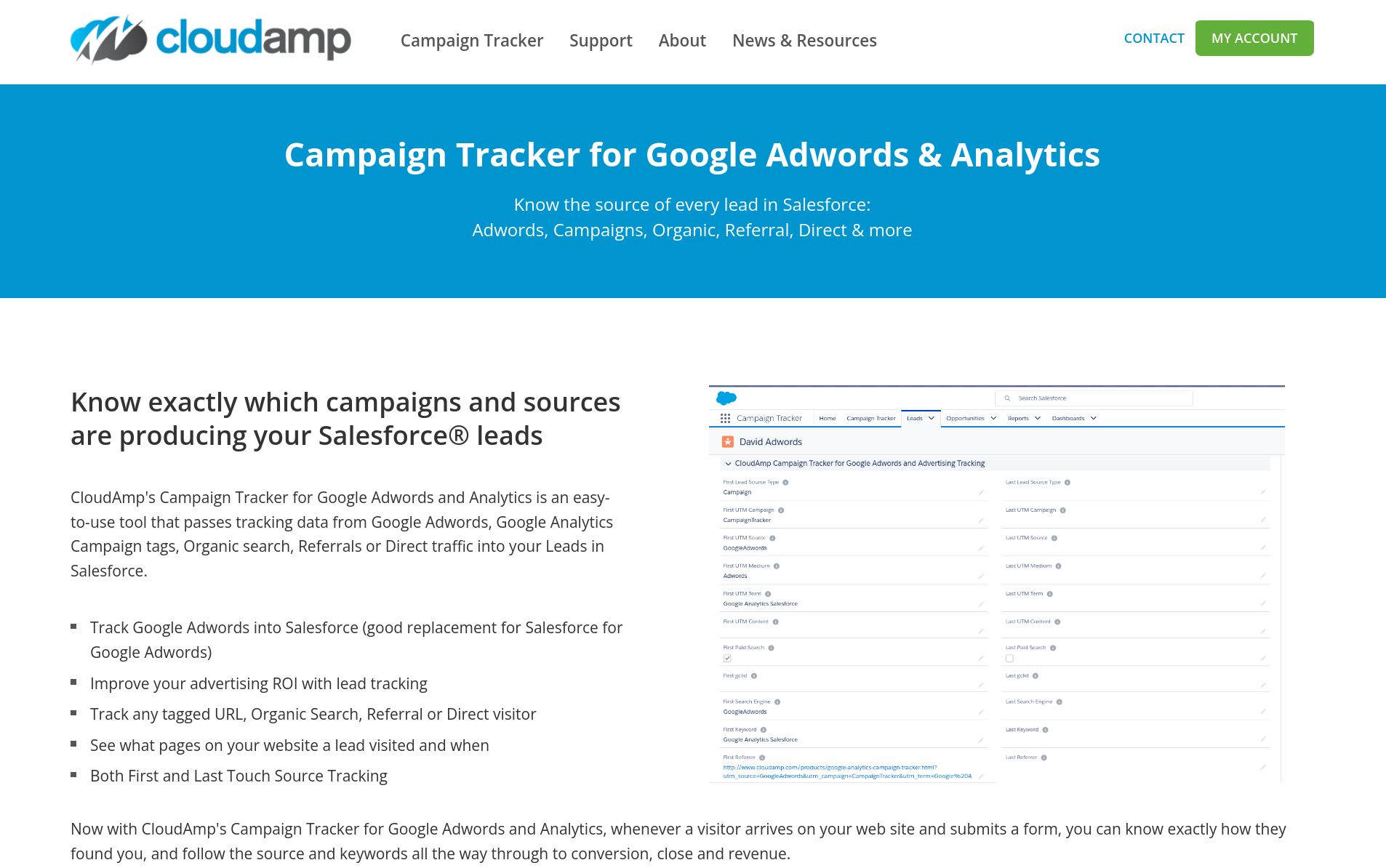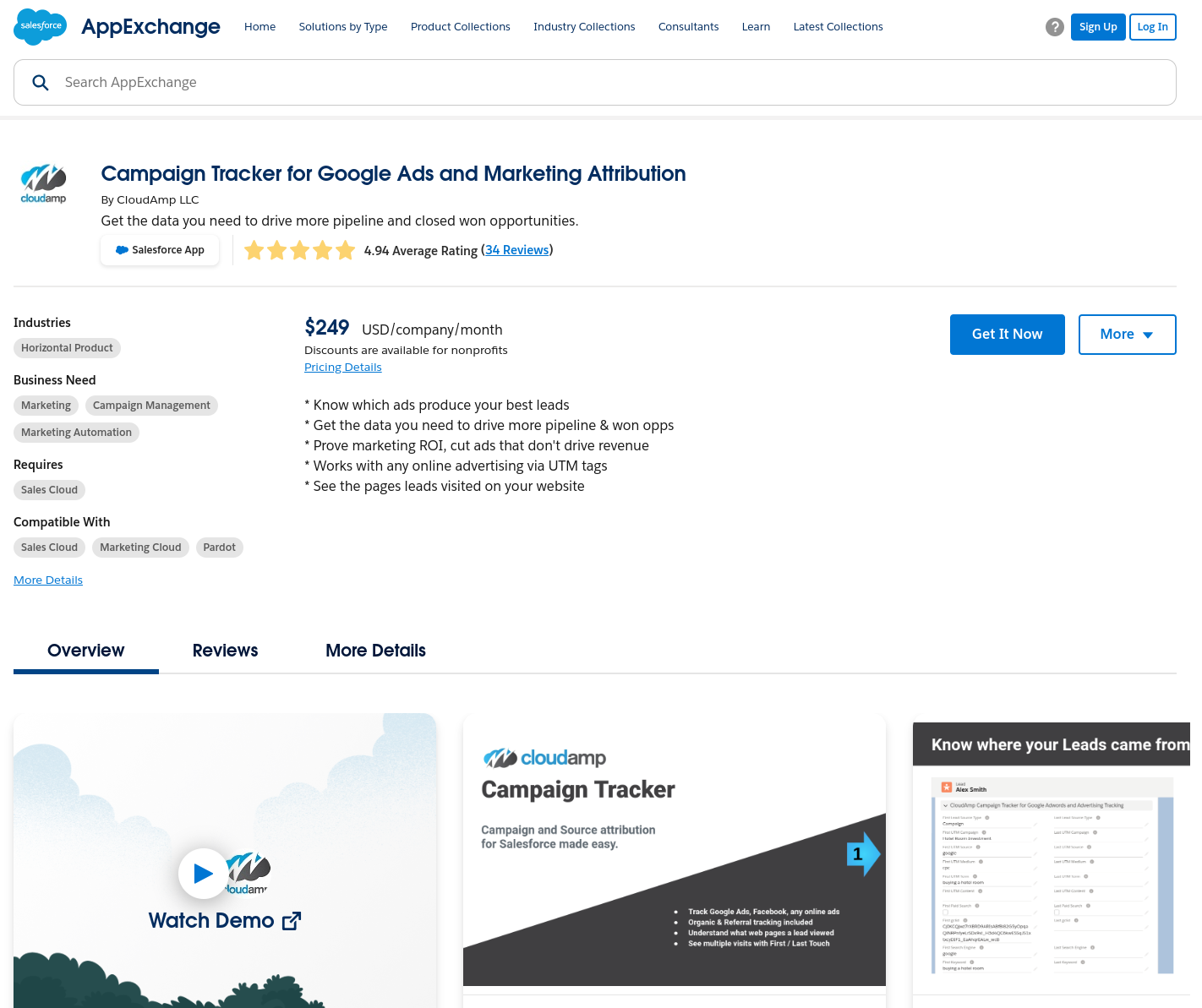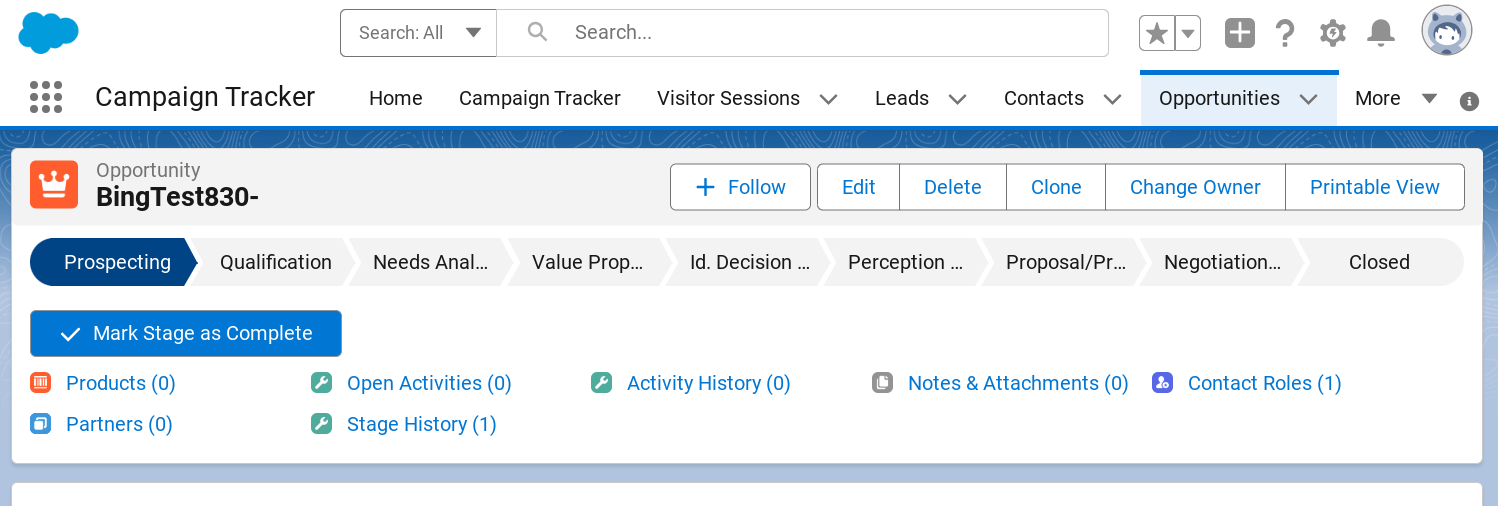The CloudAmp Campaign Tracker makes your life easier as a marketing or sales professional, by giving you the data you need to improve your advertising, right in Salesforce.
It works inside your Leads and Contacts in Salesforce Sales Cloud, but it can also work with Marketing Cloud, or external marketing automation systems that are connected to Salesforce.
You’ll get the data you need to drive more pipeline and closed won opportunities.
Plus you can prove your marketing ROI, and eliminate ads that don’t convert to revenue.
View the CloudAmp Campaign Tracker Demo Video:
So what is the Campaign Tracker?
It is both an app on the Salesforce AppExchange that runs 100% inside of your Salesforce account as a plugin, plus a script that runs on your web site. The script tracks where visitors came from, and adds that data to your form submissions that create Leads in Salesforce.
We have a 30 day trial, and provide both email and phone support to make sure you get up and running.

Once the Campaign Tracker script is live on your web site, and your forms are submitting tracking data, you’ll start to see new data in your leads coming in.
You can see both their first visit to your site, also known as First Touch, and if they came back to your site multiple times, the last visit before they submitted a form as well.
See the Campaigns, keywords, Google and Bing ad click IDs, and other utm campaign parameter tags that you set in your advertising URLs.
And if the lead did not click on an ad, you’ll get information on the Referring site or Organic information from search engines.

All of this information is right in your Salesforce Leads, and transfers over to the Contact and Opportunity when you convert a lead. So you can see the original source when the deal is closed.
This can be very helpful to you in focusing advertising budget on creating leads that convert to actual sales. And you can get the data you need to cut ads or keywords that produce a lot of inquiries, but no actual revenue.

In addition, the Campaign Tracker’s visitor sessions feature shows you what pages on your web site a lead visited, as well as the timing and duration of each visit if they came back multiple times.
This can be useful to your marketing and sales teams, to understand what products or content a lead was interested in, as well as the path they took through your web site.

So why choose the Campaign Tracker?
There are other lead source tracking apps out there, but none of them have the exclusive focus on Salesforce that CloudAmp does.
This means the Campaign Tracker passed Salesforce’s rigorous security review process, and is periodically re-checked for your peace of mind.
Your data is also kept private, as CloudAmp does not have any servers of our own — the app only lives in Salesforce. So your lead data goes directly from your web site to your Salesforce org. It is not stored anywhere else.
Finally, CloudAmp is 100% focused on Salesforce, and has been exclusively since 2012. We are Salesforce experts, and are here to make sure you are successful with Salesforce marketing attribution.
We do one thing, we do it well, and we will provide as much assistance as needed to make sure you get the data required to be successful.

So if you want to have more data about your Leads in Salesforce, including full source, campaign information and page view data to improve your marketing, contact us today, or sign up for our no obligation 30 day trial by clicking the “Get it Now” button on the Salesforce AppExchange.




